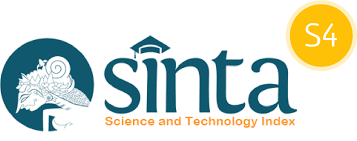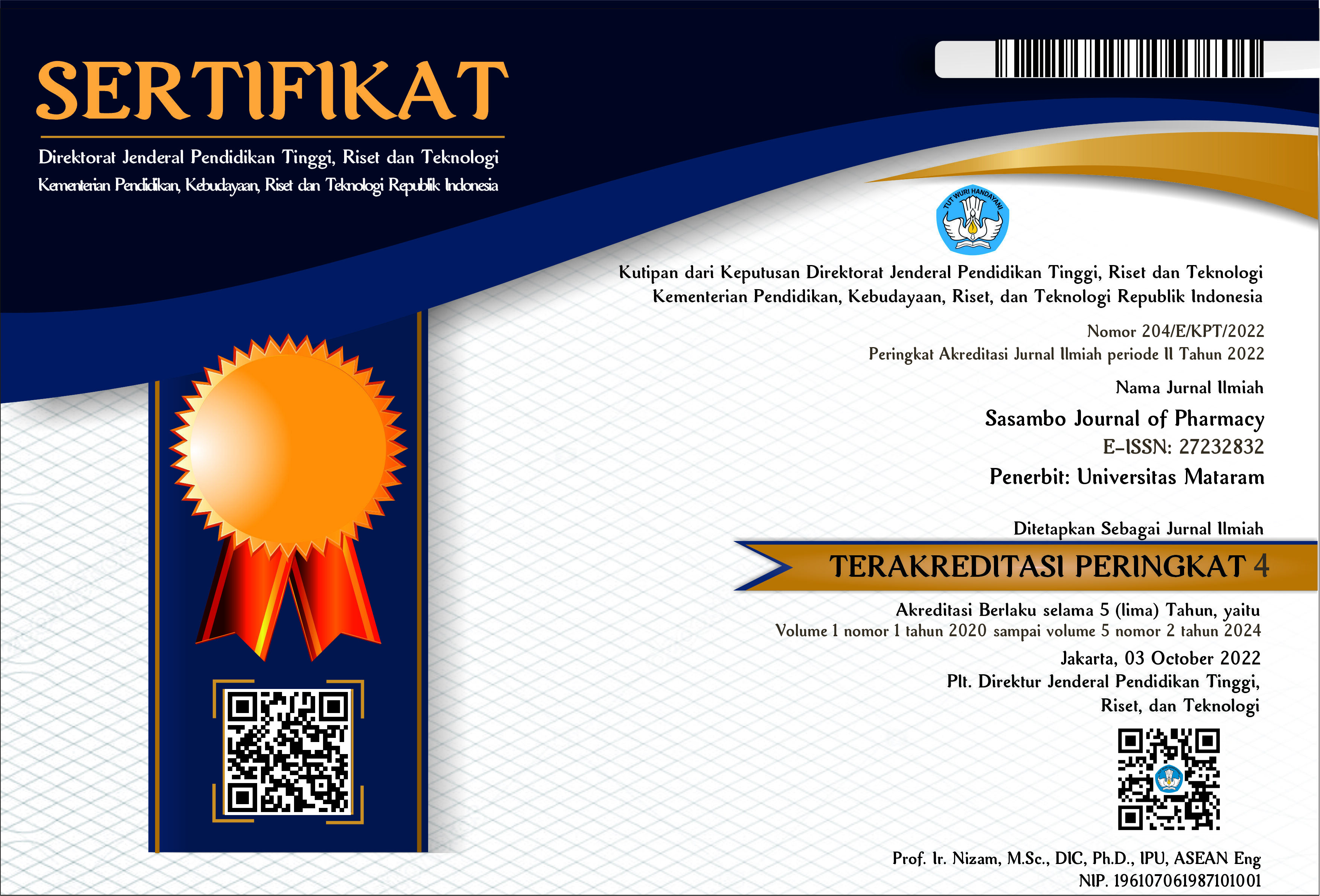Artikel review : validasi metode penentuan kadar asam retinoat pada sediaan kosmetik dalam bentuk krim dengan menggunakan berbagai instrumen
Penulis
Steve Pratama Tanjaya , Sabila Rosyada , Ditha Zanetti Octavia , Dewi Angelita Putri , Aisya Nadiya , Eskarani Tri PratiwiDOI:
10.29303/sjp.v6i1.505Diterbitkan:
2025-04-30Terbitan:
Vol 6 No 1 (2025): AprilKata Kunci:
Retinoic acid, Method validation, High-Performance Liquid Chromatography, UV-Vis Spectrophotometry, Whitening creamArticles
##submission.downloads##
Cara Mengutip
Abstrak
Whitening cream cosmetics are widely used to treat skin and are often employed to lighten the complexion of skin and reduce marking. Unfortunately, these products mostly contain hazardous ingredients like retinoic acid, effective yet capable of causing harm with its side effects in terms of skin inflammation, desiccation, and teratogenicity. This review will discuss the evaluation and comparison of the validity of the analytic method in the determination of retinoic acid in cosmetic cream formulations with different instruments; High-Performance Liquid Chromatography, Chromatography-Photodiode Array Detector, and UV-Vis Spectrophotometry methods were discussed. The conducted review used a literature review method wherein various national and international relevant studies of these analytic techniques had been analyzed. Results indicate that HPLC, especially with UV detection, presents the highest accuracy, precision, and sensitivity for quantifying retinoic acid, although it requires a longer analysis time. UV-Vis Spectrophotometry, on the other hand, though less sensitive, offers advantages in terms of simplicity, cost, and shorter duration of the analysis. Among the methods reviewed here, HPLC provides comprehensive validation parameters, demonstrating a linearity of 0.9999, an RSD of 0.99%, an accuracy of 114.3%, an LOD of 0.0165 ppm, and an LOQ of 0.0495 ppm.. Therefore, in order to ensure the safety and regulatory compliance of cosmetic products, the validation of the analytical methodologies for the detection of retinoic acid becomes indispensable, and hence the selection of the most optimal technique is highly relevant.Referensi
Bao, Y., Guo, N., Hu, X., Di, B., Liu, Y., & Sun, H. 2024. Chemical derivatization and paper spray ionization mass spectrometry for fast screening of retinoic acid in cosmetics. Molecules, 29(1), 4491. https://doi.org/10.3390/molecules29184491
BPOM RI. (2007). Kosmetik mengandung bahan berbahaya dan zat warna yang dilarang: Keputusan Kepala Badan Pengawas Obat dan Makanan Republik Indonesia No. HK.00.01.432.6081, 1 Agustus 2007. Jakarta: Badan Pengawas Obat dan Makanan Republik Indonesia.
Budiarti, A., & Vuqohan, N. (2016). Determination method of retinoic acid using high performance liquid chromatography and application on the whitening night cream. In Proceeding of the 2nd International Seminar and Conference on Global Issues (ISCoGI) 2016: European and Asian in the age of globalization: Cooperation and challenge (Paper No. A.5, pp. A.5-1). Wahid Hasyim University. ISBN 978-602-8273-57-2. http://www.iscogi.unwahas.ac.id
Erlan, E., Ahwan, & Qonitah, F. (2023). Analisis kandungan asam retinoat pada sediaan krim malam yang beredar di toko online Kota Surakarta. JFST: Jurnal Farmasi Sains dan Kesehatan, 1(1), 14-24.
Gabriela, C. M., Linden, S., & Leswana, N. F. (2022). Analisis kadar asam retinoat dalam krim pemutih di pasar pagi Kota Samarinda dengan spektrofotometri UV-visible. Jurnal Farmasi Etam, 2(2). https://doi.org/10.52841/jfe.v2i2
Hadriyati, A., Hartesi, B., & Fitri, S. (2020). Analisis asam retinoat pada krim pemutih malam yang beredar di klinik kecantikan Kota Jambi pada Kecamatan Jelutung. Media Farmasi, 17(1), 1-12.
Htet, A. M., Thin, E. E., Saw, M. M., & Win, S. (2015). Chemical analysis of hydroquinone and retinoic acid contents in facial whitening creams. Asian Journal of Pharmaceutical Sciences. Advance online publication. https://doi.org/10.1016/j.ajps.2015.11.117
Indriaty, S., Hidayati, N. R., & Bachtiar, A. (2018). Bahaya kosmetika pemutih yang mengandung merkuri dan hidroquinon serta pelatihan pengecekan registrasi kosmetika di Rumah Sakit Gunung Jati Cirebon. Jurnal Surya Masyarakat, 1(1), 8. https://doi.org/10.26714/jsm.1.1.2018.8-11
Badan Pengawas Obat dan Makanan Republik Indonesia. (2013). Keputusan Kepala BPOM RI No. HK.00.05.4.1745 tahun 2013 tentang kosmetik. Badan Pengawas Obat dan Makanan Republik Indonesia.
Martono, S., Febriani, I., & Rohman, A. (2018). Application of liquid chromatography-photodiode array detector for analysis of whitening agents in cream cosmetics. Journal of Applied Pharmaceutical Science, 8(5), 143-147. https://doi.org/10.7324/JAPS.2018.8520
Mazroatul, L., Ulya, A. A., Supandi, & Mansur, U. (2019). Analytical methods validation of retinoic acid and hydroquinone using ultra high performance liquid chromatography in medicinal cream. Pharmaceutical and Biomedical Sciences Journal, 1(1), 7-12.
Nastiti, A.A., (2016), Analisis asam retinoat pada krim pemutih wajah menggunakan KLT dan KCKT, Thesis, Universitas Islam Bandung, Bandung.
National Toxicology Program. (2012). Photocarcinogenesis study of retinoic acid and retinyl palmitate, US: Departement of Health and Human Service, 63-66.
Nuraini, I., Iswandi, & Supriyadi. (2024). Development and validation of analysis methods for retinoids, arbutin, nicotinamide in HPLC cosmetics. Jurnal Multidisiplin Madani (MUDIMA), 4(7), 939-948. https://doi.org/10.55927/mudima.v4i7.10170
Oliveira, D. de, Andrade, D. F. de, Oliveira, E. G. de, & Beck, R. C. R. (2020). Liquid chromatography method to assay tretinoin in skin layers: Validation and application in skin penetration/retention studies. Heliyon, 6(e03098). https://doi.org/10.1016/j.heliyon.2020.e03098
Rahmayuni, E., Harmita, H., & Suryadi, H. (2018). Development and validation method for simultaneous analysis of retinoic acid, hydroquinone, and corticosteroid in cream formula by high-performance liquid chromatography. Journal of Applied Pharmaceutical Science, 8(9), 87-92. https://doi.org/10.7324/JAPS.2018.8913
Ravisankar, P., Navya, C. N., Pravallika, D., & Sri, D. N. (2015). A review on step-by-step analytical method validation. IOSR Journal of Pharmacy, 5(10), 7–19.
Sari, A. I. N., & Kuntari, K. (2019). Penentuan kafein dan parasetamol dalam sediaan obat secara simultan menggunakan spektrofotometer UV-Vis. IJCA (Indonesian Journal of Chemical Analysis), 2(1), 20–27. https://doi.org/10.20885/ijca.vol2.iss1.art3
Sofyani, C. M., Chaerunnisa, A. Y., & Rusdiana, T. (2018). Validasi metode analisis kromatografi cair kinerja tinggi untuk penetapan kadar uji disolusi terbanding tablet amoksisilin. Farmaka, 16(1), 324–330.
Zain, F., Pertiwi, N. N., Lubis, M. S., & Yuniarti, R. (2024). Penentuan kadar hidrokuinon dan asam retinoat pada krim malam yang dijual di Kota Medan secara spektrofotometri ultraviolet metode dual wavelength. Bulletin of Community Engagement, 4(3). https://attractivejournal.com/index.php/bce/
Lisensi
Hak Cipta (c) 2025 The Author(s)

Artikel ini berlisensi Creative Commons Attribution 4.0 International License.
Authors who publish with Sasambo Journal of Pharmacy (SJP), agree to the following terms:
- Authors retain copyright and grant the journal right of first publication with the work simultaneously licensed under a Lisensi Creative Commons Atribusi 4.0 Internasional. This license allows authors to use all articles, data sets, graphics and appendices in data mining applications, search engines, web sites, blogs, and other platforms by providing an appropriate reference. The journal allows the author(s) to hold the copyright without restrictions and will retain publishing rights without restrictions.
- Authors are able to enter into separate, additional contractual arrangements for the non-exclusive distribution of the journal's published version of the work (e.g., post it to an institutional repository or publish it in a book), with an acknowledgment of its initial publication in Sasambo Journal of Pharmacy
- Authors are permitted and encouraged to post their work online (e.g., in institutional repositories or on their website) prior to and during the submission process, as it can lead to productive exchanges, as well as earlier and greater citation of published work (See The Effect of Open Access).





















